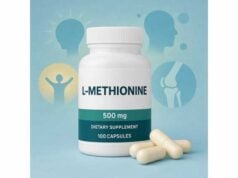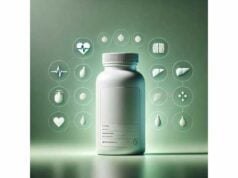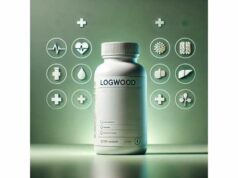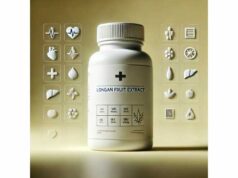
Lycopus virginicus—commonly called bugleweed—is a traditional North American mint-family herb used for calming symptoms that often accompany mild or early hyperthyroidism, such as a racing heart, heat intolerance, tremor, and restlessness. Practitioners have long paired it with closely related species (for example, Lycopus europaeus) for “vegetative” complaints: palpitations, nervousness, irritability, and sleep disruption. Modern laboratory and animal data suggest Lycopus can blunt thyroid-stimulating activity at the receptor level and may modestly dampen peripheral thyroid effects. Human evidence remains limited but indicates potential for easing symptom burden in mild cases while being generally well tolerated when used appropriately.
In this guide, you’ll learn how Lycopus seems to work, where its benefits are most plausible (and where they’re not), how to choose a form, how much people typically take, and the safety boundaries you should respect. If you’re managing a thyroid disorder or take prescription thyroid medication, collaborate with a qualified clinician before trying bugleweed.
Quick Facts
- May ease hyperthyroid-related palpitations and reduce perceived “overstimulation” in mild cases.
- Possible thyroid-calming action by limiting TSH-related signaling and peripheral effects.
- Typical adult tincture intake: 1–2 mL, up to 3 times daily; capsules: 300–400 mg, 2–3 times daily.
- Do not use during pregnancy or while breastfeeding; avoid with hypothyroidism or when taking thyroid hormone unless medically supervised.
- Monitor heart rate, symptoms, and labs with a clinician if you have known thyroid disease.
Table of Contents
- What is Lycopus virginicus?
- Does it work and for what?
- How to use: forms and quality
- How much to take (dosage)?
- Safety, side effects, who should avoid
- Evidence at a glance
What is Lycopus virginicus?
Lycopus virginicus (bugleweed) is a perennial in the Lamiaceae (mint) family that grows in damp soils in North America. Herbalists typically use the aerial parts—the above-ground leaves and stems—harvested during flowering and prepared as a tincture, fluid extract, or dried herb. Historically, Lycopus and its close relative Lycopus europaeus (gypsywort) were described as “antithyroid” botanicals for mild hyperthyroid states. In modern practice, bugleweed is framed less as a replacement for conventional therapy and more as a symptom-focused adjunct—particularly for palpitations, a sense of inner “overdrive,” and heat intolerance—when a clinician judges that a gentle approach is reasonable.
How it may work. Laboratory findings indicate that compounds in Lycopus can interfere with thyroid stimulation. Mechanistically, extracts have been shown to impede the binding of thyroid-stimulating hormone (TSH) and Graves’ disease autoantibodies to the TSH receptor in vitro, an action that would be expected to tone down thyroid activation. In animals, Lycopus extracts have reduced hyperthyroid-like cardiac effects—lowering excessive heart rate and moderating cardiac hypertrophy—without clearly shifting circulating T3/T4 in low doses. Other research on Lycopus species highlights polyphenols (such as rosmarinic acid–related compounds and lithospermic-acid derivatives) with antioxidant and anti-inflammatory properties, which might support the herb’s calming effect on overstimulated tissues.
What it is not. Lycopus is not a cure for hyperthyroidism, not an emergency therapy, and not a direct substitute for antithyroid drugs, beta-blockers, radioiodine, or surgery when those are indicated. Its role, when used at all, is best thought of as targeted symptom relief for mild cases or as a carefully monitored bridge while determining a long-term plan with your healthcare team.
Related species and preparations. Labels and older texts may cite Lycopus europaeus, Lycopus lucidus, or just “bugleweed.” The clinical literature skews toward L. europaeus preparations; however, North American herbal practice often employs L. virginicus. Quality and standardization vary, so choosing reputable products and matching the form to your needs is essential (see “How to use” below).
Who considers it. Adults with mild, clinician-assessed hyperthyroid symptoms—especially palpitations and inner agitation—sometimes trial bugleweed short-term while tracking heart rate, blood pressure, and symptoms. Because the herb may modestly blunt thyroid stimulation, people with low thyroid function or those taking thyroid hormone should avoid it unless a clinician is actively supervising dose and labs.
Does it work and for what?
Most plausible benefit: easing mild hyperthyroid symptoms. The strongest thread running through both historical practice and modern data is symptom relief in mild hyperthyroidism—especially cardiovascular symptoms like elevated resting heart rate and palpitations. In a controlled animal model of thyroxine-induced hyperthyroidism, a hydroethanolic Lycopus extract reduced tachycardia, high blood pressure, elevated body temperature, and cardiac hypertrophy compared with untreated animals, with effects approaching those of a beta-blocker on some measures. This aligns with human observational findings in general-practice settings where patients with mild, symptomatic hyperthyroidism using standardized Lycopus europaeus preparations reported clinically meaningful improvement in symptom counts and overall well-being across several weeks, with good tolerability.
Mechanism fits the effect. In vitro, TSH-receptor–related antagonism has been demonstrated: plant extracts from Lycopus spp. reduced TSH binding and dampened downstream adenylate cyclase activation in human thyroid membrane preparations, and they attenuated the biological activity of Graves’ autoantibodies. While cell and ex vivo data can’t predict clinical outcomes by themselves, they offer a plausible mechanism that matches the “calming” clinical pattern: fewer palpitations, less heat intolerance, and reduced sense of internal acceleration in susceptible individuals.
What about thyroid labs? In animal studies, low to moderate Lycopus dosing often improved cardiac signs without large shifts in TSH, T3, or T4. Human observational work has shown symptom reduction with variable or modest changes in thyroid indices; one prospective study documented an increase in urinary T4 excretion—a potential sign of altered handling—while symptom scores improved. Clinically, that means Lycopus might help you feel better even if your lab numbers don’t change dramatically. It’s not an all-or-nothing antithyroid drug; think of it as gentle modulation rather than a hammer.
Beyond thyroid: antioxidant and antimicrobial properties. Several modern analyses of Lycopus taxa demonstrate antioxidant capacity and antimicrobial activity in vitro. While interesting, these properties are not the primary reason to take bugleweed and should not be extrapolated to treating infections. They do, however, support an overall profile of tissue-soothing potential.
Where the evidence is thin. There are no large randomized trials showing that Lycopus treats moderate-to-severe hyperthyroidism, prevents complications, or replaces conventional therapy. Case reports describe improvements with combination botanical products in Graves’ disease, but such reports can’t establish cause and effect. Consequently, Lycopus is best positioned for mild symptom relief under clinical guidance, not as a stand-alone treatment for established disease.
Bottom line. If you and your clinician are managing mild hyperthyroid-type symptoms—or you’re awaiting a definitive plan—Lycopus may help ease palpitations and “overstimulation” and support comfort. It should not delay appropriate evaluation or proven treatment when needed.
How to use: forms and quality
Common forms
- Tincture / liquid extract (alcohol-based): Traditionally prepared at 1:2 to 1:5 herb-to-solvent ratios; commercial products vary. Fast onset, easy to split across the day, and simple to taper.
- Fluid extract (1:1): More concentrated; smaller volumes deliver equivalent herb amounts.
- Capsules / tablets: Typically standardized dried extract or powdered herb; convenient for travel or those avoiding alcohol.
- Tea (infusion): Less commonly used for therapeutic effects because achieving consistent, effective strength is difficult; better as a calming adjunct than a primary form.
Quality checkpoints
- Botanical identity: Look for Lycopus virginicus or Lycopus europaeus clearly listed. Either may appear as “bugleweed.”
- Manufacturer transparency: Reputable brands provide extraction ratio, solvent, and per-serving herb equivalents.
- Contaminant testing: Third-party assays for heavy metals, microbial limits, and pesticides are a plus.
- Stability dating: Choose products with a clearly marked expiration date and lot number.
- Consistency: If you respond to one preparation, stick with the same brand and form for predictability; switching can subtly change potency.
When and how to take
- Divide doses: Many people do best taking bugleweed 2–3 times daily, aiming to smooth out peaks and reduce jittery periods.
- With or without food: Tolerated either way. If you notice queasiness on an empty stomach, take with a small snack.
- Symptom-guided titration: Start low, increase gradually over 3–7 days, and reassess weekly with a simple symptom log (resting heart rate, sleep quality, heat intolerance, tremor, anxiety/palpitations).
- Complementary supports: Some clinicians pair Lycopus with lemon balm (Melissa officinalis) for additional calm or a beta-blocker if prescribed; do this only with medical input, as combinations can mask changes in your thyroid status.
How long to try
- A 2–4 week trial is typical to gauge symptom benefit. If you feel clearly better and your clinician agrees labs and vitals are stable, you can continue while monitoring. If no benefit after 4 weeks at reasonable dosing (see next section), it’s reasonable to rethink the approach.
Travel and adherence tips
- Keep liquid extracts in a dropper bottle with milliliter markings; pre-measure doses if needed.
- For workdays, set up dose reminders aligned to meals or breaks.
- Note sleep and morning heart rate—they’re sensitive markers that often improve first when Lycopus helps.
How much to take (dosage)?
Typical adult ranges (general information, not a prescription):
- Tincture (1:5 or similar): 1–2 mL, two to three times daily (total 2–6 mL/day).
- Fluid extract (1:1): 0.5–1 mL, two to three times daily (total 1–3 mL/day).
- Capsules (standardized extract or powdered herb): 300–400 mg, two to three times daily (total 600–1,200 mg/day).
Starting low and building up
- Days 1–3: Begin at the low end of the relevant range (e.g., 0.5–1 mL tincture twice daily or 300 mg capsule twice daily).
- Days 4–7: If tolerated and you still notice palpitations or inner agitation, increase by about 25–50% per dose.
- After week 1: Many people land at 1–2 mL tincture three times daily or 300–400 mg capsule three times daily for steady symptom control. Do not exceed label directions without clinician approval.
Timing tips
- If nocturnal palpitations or sleep disruption are an issue, ensure one dose is taken 60–90 minutes before bedtime.
- If your resting heart rate spikes after meals, shift a dose 15–30 minutes pre-meal.
Adjusting with other therapies
- On thyroid medication: Do not self-add bugleweed. Because it may dampen thyroid stimulation, it can alter your needed dose of levothyroxine or combination therapy. Only add (or remove) it with clinician oversight and repeat labs in 2–4 weeks.
- On beta-blockers: Combining the two can be reasonable for symptom control, but track heart rate and blood pressure to avoid excessive lowering.
Stopping or tapering
- Taper over 3–7 days if you’ve been using higher doses regularly, especially if you feel sensitive to changes in heart rate.
- If a clinician starts you on definitive antithyroid therapy, ask whether to discontinue bugleweed to reduce confounding.
Special populations
- Older adults or those with multiple medications: start at half the usual dose and titrate more slowly.
- Liver or kidney disease: Use extra caution; many tinctures are alcohol-based, and metabolic handling can vary—get individualized advice.
Safety, side effects, who should avoid
Likely side effects (usually mild, if any)
- Digestive: queasiness, mild stomach upset (often reduced by taking with food).
- Neurologic: occasional drowsiness or, conversely, light stimulation in sensitive users—adjust timing if this occurs.
- Endocrine: in theory, excessive or long-term high dosing could over-suppress thyroid activity in susceptible people; this is uncommon at typical doses but underscores the value of clinical monitoring.
Red flags—stop and contact a clinician
- Worsening palpitations, chest pain, shortness of breath, or sustained resting heart rate >110 bpm.
- New tremor, confusion, fever, or diarrhea with weight loss—possible signs of uncontrolled hyperthyroidism (“thyroid storm” is a medical emergency).
- Signs of hypothyroidism (unusual fatigue, cold intolerance, constipation) after starting bugleweed—could reflect over-suppression.
Who should not use bugleweed
- Pregnancy or breastfeeding: Avoid. Lycopus may influence hormones and potentially reduce milk production.
- Known hypothyroidism or on thyroid hormone replacement without close medical supervision.
- Planned radioactive iodine therapy or thyroid surgery in the near term—don’t add confounding agents.
- Allergy to mint-family plants (Lamiaceae) or a known sensitivity to bugleweed.
Caution and interactions
- Antithyroid drugs or beta-blockers: Co-use is clinician-directed only; combined effects may require dose adjustments.
- Diabetes medications: Rare reports and theoretical concerns suggest bugleweed could lower blood glucose in some; if you have diabetes, monitor closely when adding any new herb.
- Hormonal therapies: Because Lycopus can influence endocrine signaling, discuss use if you’re on hormonal contraception or fertility treatments.
Quality and contamination risks
- Choose reputable brands that specify species, extraction ratio, and testing. Avoid products with unclear labeling or exaggerated claims.
- For alcohol sensitivity (including medications like disulfiram), opt for alcohol-free glycerites or capsules.
Monitoring plan if you use it
- Track resting heart rate, sleep, and heat intolerance daily for 1–2 weeks.
- If you have a known thyroid condition, repeat TSH, free T4, and (if indicated) free T3 with your clinician 2–4 weeks after starting or changing dose.
Evidence at a glance
What the data show
- Mechanistic support: In human thyroid membrane experiments, Lycopus extracts reduced TSH binding and dampened downstream signaling. Extracts also inhibited Graves’ autoantibody activity. These are coherent mechanisms for thryoid-calming effects.
- Animal efficacy: In a thyroxine-induced hyperthyroid rat model, a standardized Lycopus extract lowered heart rate and blood pressure, reduced hyperthermia, and attenuated cardiac hypertrophy versus no treatment; effects were comparable to a beta-blocker on some measures.
- Human observations: In general practice, standardized L. europaeus preparations were associated with symptom improvement in mild hyperthyroidism across several hundred patients, with good tolerance. A prospective study noted increased urinary T4 excretion alongside reduced thyroid-specific symptoms over three months.
- Case reports: Contemporary case descriptions (including combination products with Melissa officinalis) suggest symptom control in Graves’ disease; these are low-certainty signals that warrant controlled research.
- Additional properties: Modern analyses document antioxidant and antimicrobial activity across Lycopus taxa—supportive but not primary for thyroid care.
What remains uncertain
- No large, blinded randomized trials directly compare Lycopus to standard antithyroid drugs or placebo in human hyperthyroidism.
- Optimal standardization and dose–response relationships are not well defined across different extracts and species.
- Long-term outcomes (goiter size, recurrence, atrial fibrillation risk, bone impacts) with Lycopus are unknown.
Practical takeaway
Lycopus is best considered a symptom-modulating adjunct for mild hyperthyroid presentations, used short to intermediate term with clinical supervision, rather than a replacement for proven therapies in moderate-to-severe disease.
References
- Inhibition by certain plant extracts of the binding and adenylate cyclase stimulatory effect of bovine thyrotropin in human thyroid membranes 1984 (Mechanistic)
- Extracts and auto-oxidized constituents of certain plants inhibit the receptor-binding and the biological activity of Graves’ immunoglobulins 1985 (Mechanistic)
- Extract of Lycopus europaeus L. reduces cardiac signs of hyperthyroidism in rats 2006 (Preclinical)
- Lycopus europaeus (Gypsywort): effects on the thyroidal parameters and symptoms associated with thyroid function 2008 (Prospective clinical)
- Antimicrobial and Antioxidant Properties of Four Lycopus Taxa and an Interaction Study of Their Major Compounds 2020 (Pharmacology)
- Two Cases of Graves’ Hyperthyroidism Treated With Homeopathic Remedies Containing Herbal Extracts from Lycopus spp. and Melissa officinalis 2021 (Case report)
- Bugleweed Uses, Benefits & Dosage 2025 (Monograph)
Disclaimer
This information is educational and is not a substitute for personalized medical advice, diagnosis, or treatment. Herbs that influence thyroid function can interact with medications and alter lab results. If you have—or suspect you have—a thyroid disorder, work with a qualified healthcare professional before starting Lycopus virginicus or changing any treatment. If you are pregnant, planning pregnancy, or breastfeeding, do not use bugleweed. Seek urgent care for chest pain, severe shortness of breath, or signs of uncontrolled hyperthyroidism.
If you found this article useful, consider sharing it on Facebook, X (formerly Twitter), or your favorite platform, and follow us for more evidence-guided wellness content. Your support helps us continue producing high-quality resources.










